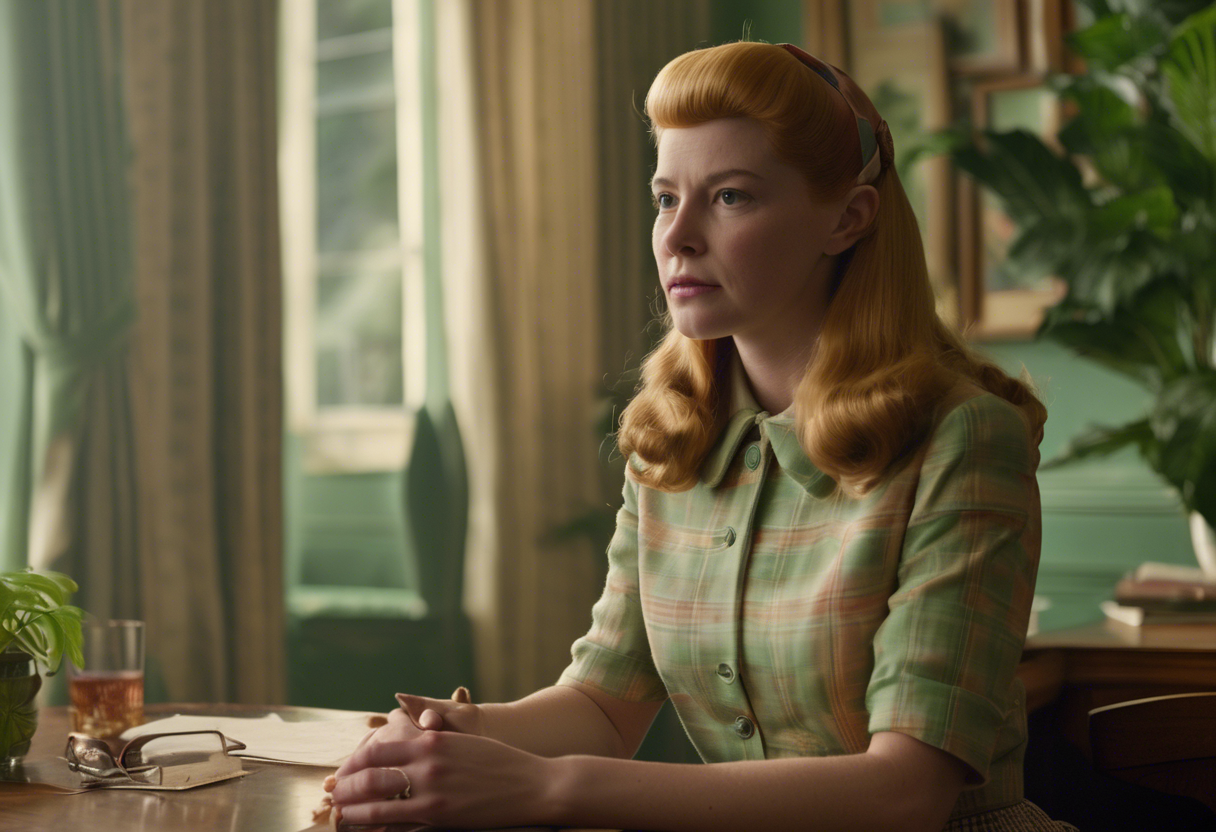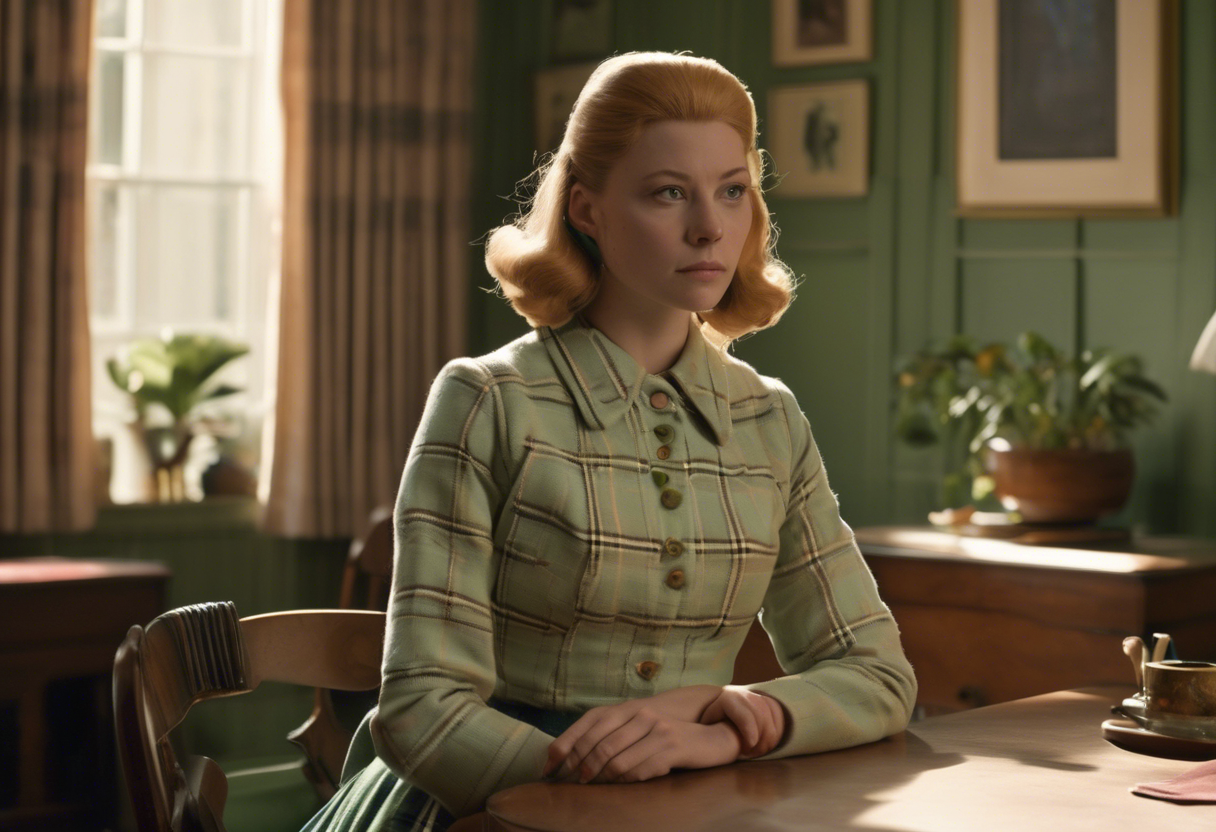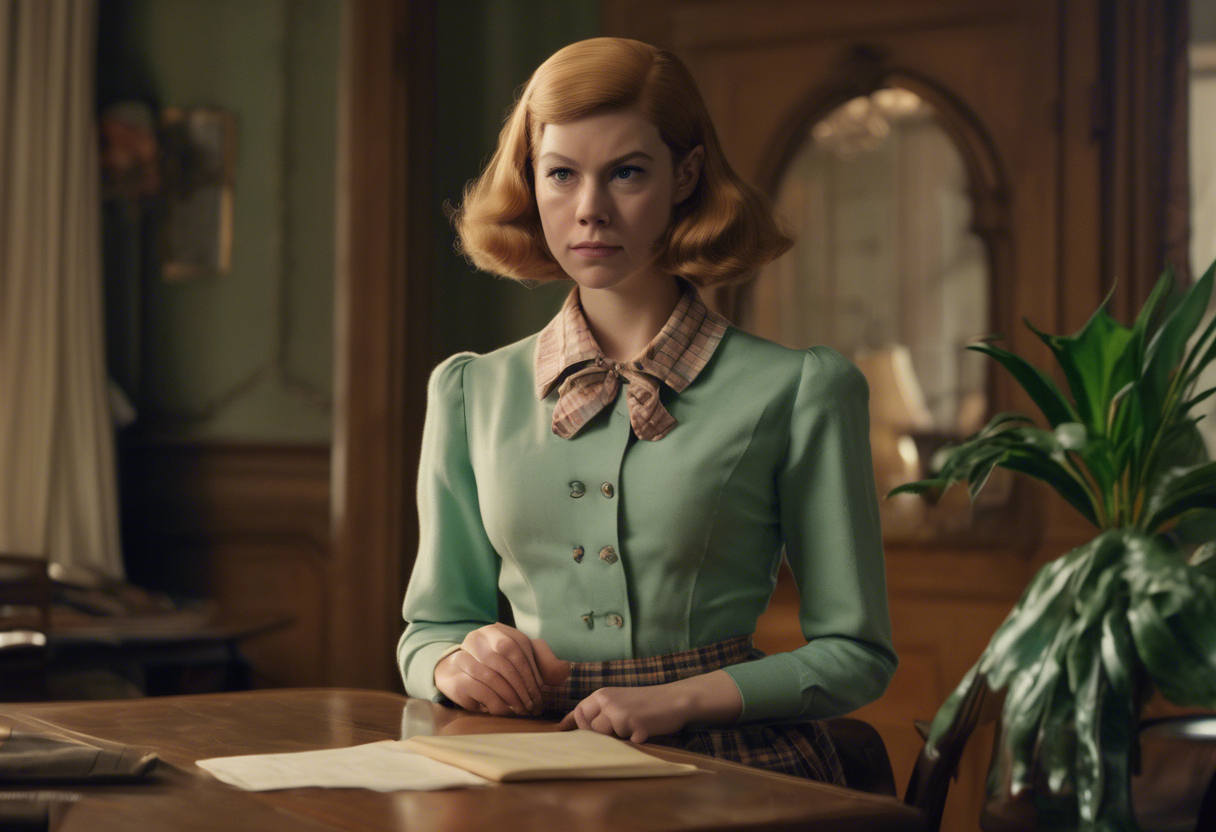Annette Packer is a supporting character in the Netflix miniseries The Queen’s Gambit, which chronicles the life of Beth Harmon, a young chess prodigy rising through competitive ranks in the 1960s. Introduced as Beth’s first official opponent in a formal chess tournament, Annette plays a brief but meaningful role that helps establish key aspects of Beth’s early chess journey and the broader themes of the series.
Annette first appears during the 1963 Kentucky State Championship, where a 13-year-old Beth faces her as the opening round opponent. As a friendly and supportive rival, Annette introduces Beth to the intricacies of tournament play—teaching her about the use of the chess clock and the procedure for recording moves. This mentorship-like interaction underscores Annette’s kind and encouraging nature. Despite being kind, Annette is also representative of the competitive environment Beth is entering; although she loses to Beth without much difficulty, her sportsmanship and encouragement to Beth after the match symbolize the camaraderie among female chess players in a male-dominated sphere [1][4].
In terms of backstory, Annette is a fellow teenager from the same era, quietly demonstrating the challenges and support systems present for young women in chess during the 1960s. Her role is brief but pivotal: By helping Beth understand the formalities and expectations of organized chess tournaments, she serves as a gateway character who eases Beth’s transition into a larger, competitive world. Annette’s demeanor and actions contrast somewhat with Beth’s solitary and driven nature, highlighting themes of mentorship and allyship among women in a traditionally male field.
Throughout The Queen’s Gambit, Annette reappears briefly as a symbol of encouragement and empowerment. After their first match, she later appears cheering Beth on, reinforcing a narrative about female competence and solidarity in chess, a key theme of the series. In one of Beth’s moments of doubt and self-reflection, Annette’s words emphasize the importance of female achievement and inspire Beth to continue proving that girls can succeed at the highest levels. This moment resonates not only within the story but also reflects larger cultural shifts around gender roles and expectations during the 1960s [2][4].
Despite her minor presence in terms of screen time, Annette’s character is carefully crafted to embody traits of kindness, generosity, and quiet confidence. She is portrayed as approachable and supportive—qualities that sharpen the viewer’s understanding of Beth’s challenges and motivations. Annette’s willingness to welcome and encourage a newcomer adds emotional depth early in Beth’s journey, setting a tone of hopefulness that persists despite Beth’s eventual struggles with addiction and isolation.
Symbolically, Annette represents the informal networks and small acts of kindness that enable marginalized figures to survive and thrive in competitive environments. She embodies the theme of female solidarity breaking through societal limitations, standing as a subtle but powerful figure illustrating that success is not just individual but often communal. Annette’s role, while small, ties into the series’ broader message about overcoming barriers in male-dominated fields and the value of support among women [1][2].
Culturally, Annette Packer has become recognizable as a symbol of the overlooked yet meaningful characters who contribute to a protagonist’s development. Fans of The Queen’s Gambit often celebrate her as “the Kotex girl,” referencing the scene where she gives Beth a sanitary pad during their tournament break, which serves as a tender moment highlighting female empathy and normalizing women’s bodily experiences in contexts rarely depicted in media focused on competition or genius. This representation has resonated with viewers, many of whom identify with or appreciate the acknowledgment of everyday female realities embedded within the show’s historical and competitive setting [2].
Critically, although Annette is a minor character, commentators have praised the choice to include and flesh out a positive peer figure in Beth’s early experiences. This subtle inclusion enriches the narrative by demonstrating that while Beth’s journey is highly individual, it is shaped by interactions with supportive others. Some reviewers note that Annette’s presence helps balance the often intense and solitary portrayal of Beth’s character, allowing for moments of warmth and hope to punctuate the storyline’s tension. There is little controversy around Annette; rather, she is widely accepted as a meaningful emblem of early female support in a male-dominated sport [1][4].
Annette Packer’s legacy within The Queen’s Gambit rests in her symbolic contribution to Beth’s story and the themes of gender, mentorship, and empowerment the series elevates. Although she does not appear extensively, her role as Beth’s first tournament opponent and a source of encouragement has inspired discussions about the importance of representation of supportive women in narratives about precocious talent. Annette exemplifies how seemingly small characters can have significant thematic weight and enduring appeal in popular culture. Her portrayal broadens the portrayal of female chess players beyond solitary geniuses, highlighting community and shared experience. Future works in similar genres have the opportunity to draw from Annette’s archetype—kind, knowledgeable, and quietly empowering—to enrich stories of competition and growth [1][2][4].
References
- https://www.litcharts.com/lit/the-queen-s-gambit/characters/annette-packer
- https://www.latimes.com/entertainment-arts/tv/story/2020-11-20/queens-gambit-beth-could-have-changed-my-life
- https://en.wikipedia.org/wiki/The_Queen’s_Gambit_(miniseries)
- https://screenrant.com/netflix-the-queens-gambit-beth-most-least-supporting-friends/
- https://screenrant.com/queens-gambit-cast-character-guide/







